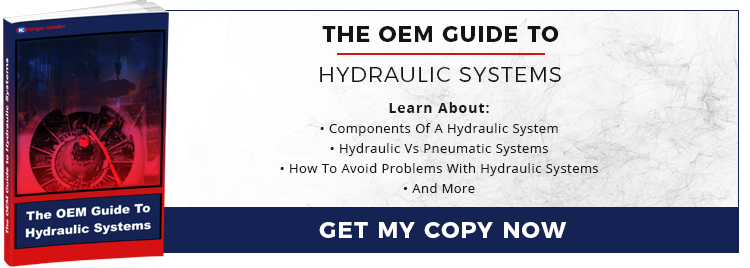
Several factors play a role in choosing the right hydraulic cylinder. Although there are many specifications that contribute to efficient function, the following are arguably the most important when choosing a product.
1) Cylinder Type
The cylinder type, in this context, is distinct from the variety of hydraulic cylinder, e.g. double acting, single acting, telescopic etc. Type refers to how the structure of the cylinder applies and stabilises the force exerted by the piston rod. There are three principal types:
a) Welded cylinder
A welded cylinder has a smooth external surface to which is welded a protective cylinder housing to provide additional operational stability.
b) Tie rod cylinder
A tie rod cylinder provides stability to the component by means of tie rods attached to the outside diameter of the cylinder housing. These absorb most of the operating load, allowing the cylinder housing itself to be more compact and made of lighter weight materials.
c) Hydraulic ram
Hydraulic rams are used to exert a pushing, rather than pulling force and can exert extremely high force outputs. They are usually, but not exclusively, single acting cylinders. Structurally, a ram is characterised by a robust rod with a cross-section area 50% or more the size of the surface area of the moving piston.
2) Stroke
The stroke length is indicative of the speed and size of the hydraulic cylinder, literally measuring how far the piston has to travel within its tube from the closed to open position. Stroke varies widely from cylinder to cylinder, with larger units having a longer stroke length. Stroke is one of the two defining characteristics of a cylinder, the other being bore. Knowing a cylinder’s stroke also shows how far it can lift or push a load on each movement e.g. 30”.
3) Bore
A hydraulic cylinder’s bore is simply another term for the inside diameter of the cylinder tube. This is an extremely important specification, as from the bore you can determine the piston area, maximum operating pressure and the force the cylinder can exert. Hydraulic cylinders can be purchased in a range of ISO standard measurement bores, from 40mm to 800mm, as well as bespoke diameters. To avoid confusion, the external diameter measurement is referred to as the Outer Diameter, or OD.
4) Maximum Operating Pressure
The maximum operating pressure is indicative of how much working pressure a cylinder can withstand before risking critical failure. It is important not to exceed this parameter, and to pay close attention to a unit’s operating pressure on the cylinder’s pressure gauges. Standard hydraulic cylinders generally have a maximum operating pressure of 2000 to 3000 psi.
5) Rod Diameter
The size of a cylinder’s piston rod, measured by its diameter, is an important measure of its force exertion and/or reach. Standard pull-stroke cylinders have rod diameters of 0.5 to 2 inches, allowing them to exert a force of up to 120,000 lbs – depending on the cylinder’s size, pressure input and other characteristics. High force or long reach hydraulic cylinders may have a piston rod diameter of over 10 inches, allowing the cylinder to move loads of 1.8 million lbs or more in the right circumstances.
Piston rods are assessed in terms of their slenderness ratio, which can be calculated as follows:
S = slenderness ratio
L = length
R = Gyration radius
D = Rod diameter
The slenderness ratio provides insight into a rod’s compressive strength, thrust capacity, total rod area and its safety factor. Higher slenderness ratios – e.g. those over 50 – indicate greater stability and safety, especially when operating at the higher end of their force capacity.
Unsure Of The Specifications You Need?
If you are unsure about the right cylinder specifications for your project, please get in touch. Our knowledgeable advisors are always ready to help you choose the right component at the best price for your needs.
Call 01299 896953, or click here to request a product brochure.







